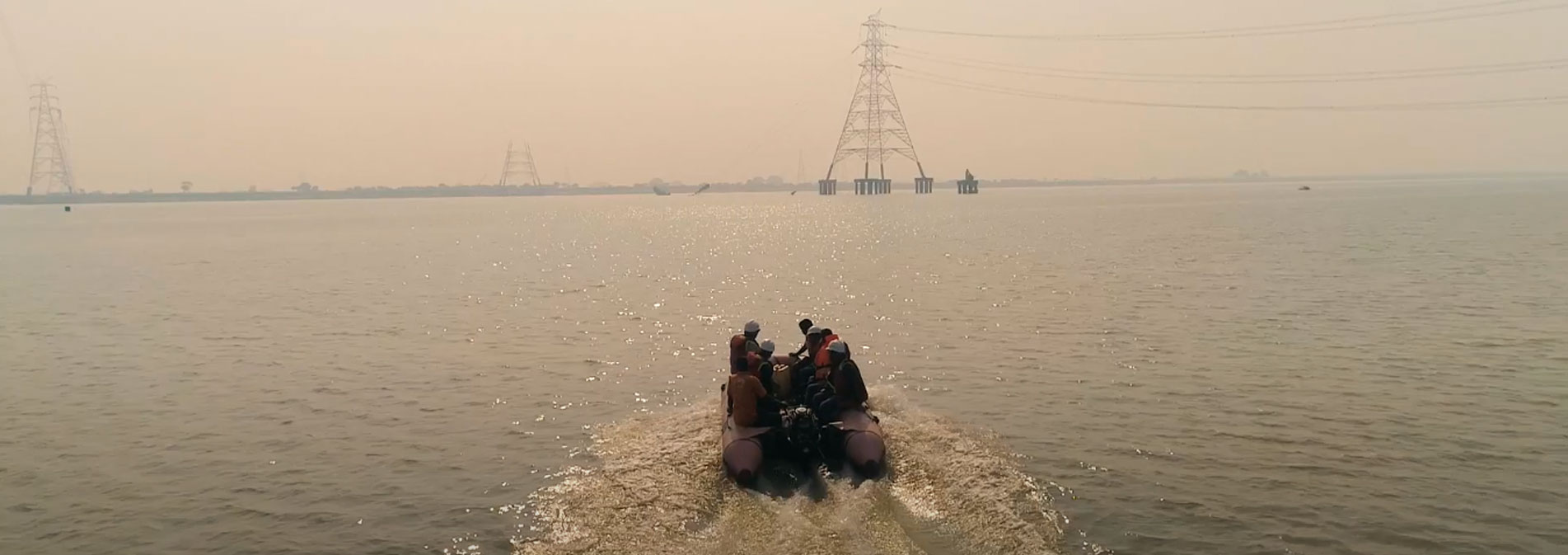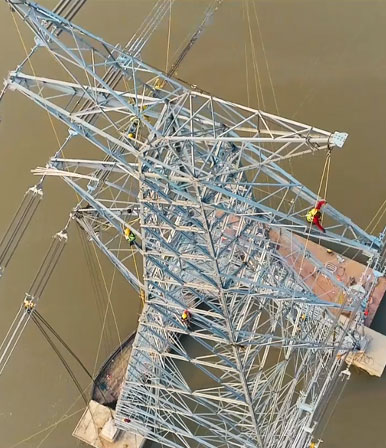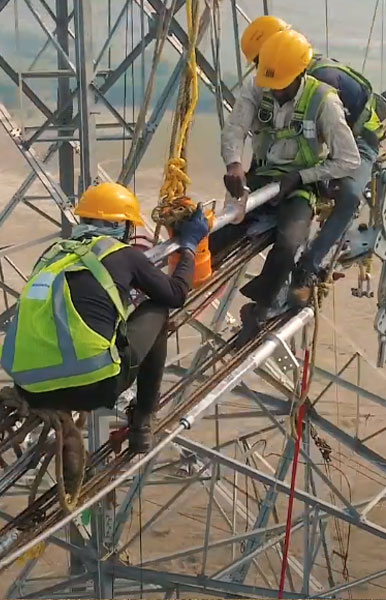
Megastructures
Giant leap across the mighty Ganges
Commissioning the 400-kV Purnia-Bihar Shariff power transmission line was not an easy task. Team Sterlite Power relied on its engineering and project execution expertise, innovation, tenacity and passion to conquer the toughest challenges to overcome all obstacles and complete the project in record time.
The 400 kV Purnia-Bihar Shariff transmission line was disrupted due to the frequent changing of the course of the mighty river Ganges. The restoration of this line was undertaken through treacherous terrain, navigating swamps, and marshy lands that made the deployment of crucial logistics a challenge. The timely and successful completion of this project is a story of determination, tenacity, innovation and a bold approach. Importantly, it is a true reflection of Sterlite Power's core purpose 'Empowering Humanity by Addressing the Toughest Challenges of Energy Delivery'.
A bold approach
Flash floods in the Ganges had washed away transmission towers disrupting the Purnia-Bihar Shariff line. The remaining towers suddenly found themselves surrounded by the river and her swirling waters, without any support structures in the middle. Sterlite Power was tasked with restoring this power corridor, which was critical for providing reliable and quality power to the North East and Eastern regions.
As solutions were being worked out, the idea of constructing pile foundations in the riverbed was almost immediately ruled out. This would not only have taken months for construction but would have been cost and labour-intensive as well. Importantly, it would have disturbed the delicate ecosystem in the riverbed that many locals were dependent on for their livelihoods.
In this context, Sterlite Power proposed a bold approach. The solution was to reconstruct a 1.1 km span over the 400 kV line across both sides of the riverbank with no support structures in the middle.

Customising Innovative Solutions
The project had to be executed across an active water channel. Men, machines and materials were moved on floating barges and ferries. In fact, there was a careful selection of floating barges, based on their load capacity to ensure they were fully capable of transporting heavy materials. Special care was taken to ensure distributed loading on the barges. Heavy cranes for lifting machinery had to be dismantled and loaded on the ferries to take them to the worksite — where they were unloaded and reassembled before they could be put to work. Work commenced on floating platforms and at heights, where even the smallest mistake could be a costly one. The teams had to think on their feet, customising solutions as they went along, to meet this challenge. Work had to be shut down if wind speeds came anywhere close to 13 metres per second. Workers had to be specially trained before they climbed up the towers because they could get distracted by the movement of the active water channel below. The water level on the river was monitored 10 km ahead of the work site so that in case of any emergency, an alarm could be raised on time to ensure the safety of workers. Given the long stretch of 1.1 km and due to heavy fog on some days, the other side of the riverbank and tower remained invisible throughout the day and most of the communication took place with the help of walkie talkies.
Meanwhile, the teams were innovating hard on a workable solution. They had to design a conductor to specially address the main requirement for this project. The sag had to be kept low while transferring the same power capacity and the weight of the conductor could not exert too much pressure on the towers. Such a conductor at the time did not exist. Thus, was born the ACCC-Ultra Low Sag (ULS) Ganges.
Multiple teams worked in unison day and night to meet these challenges head-on, maintaining responsibility for the heavy marine equipment, while at the same time executing the stringing of one of the longest spans in India within the scheduled timeframe.
Maintaining High Safety Standards
In line with best practices, the highest safety standards were maintained while executing this project in challenging conditions. Boats were well-equipped with first aid kits, life jackets and other safety equipment. Specialised training sessions on risk awareness and mitigation designed to work across river crossings were held daily, while rescue boats and professional divers were on stand-by for any emergency. Wind speeds and water flow were tested every hour. An Environment Health & Safety team also closely monitored safety procedures for the movement of man and materials.
Conclusion
Undaunted by winds, waves and tides, aided by robust technology and pioneering innovations, Team Sterlite Power once again lived its core purpose by picking up the toughest challenges and resolving them with tenacity, innovation and determination. The ACCC ULS Ganges, a new carbon composite core conductor, while customised for this project, will transform the way long span transmission is done across river-crossings and hilly terrain, for up to a span of 1.25 km.
